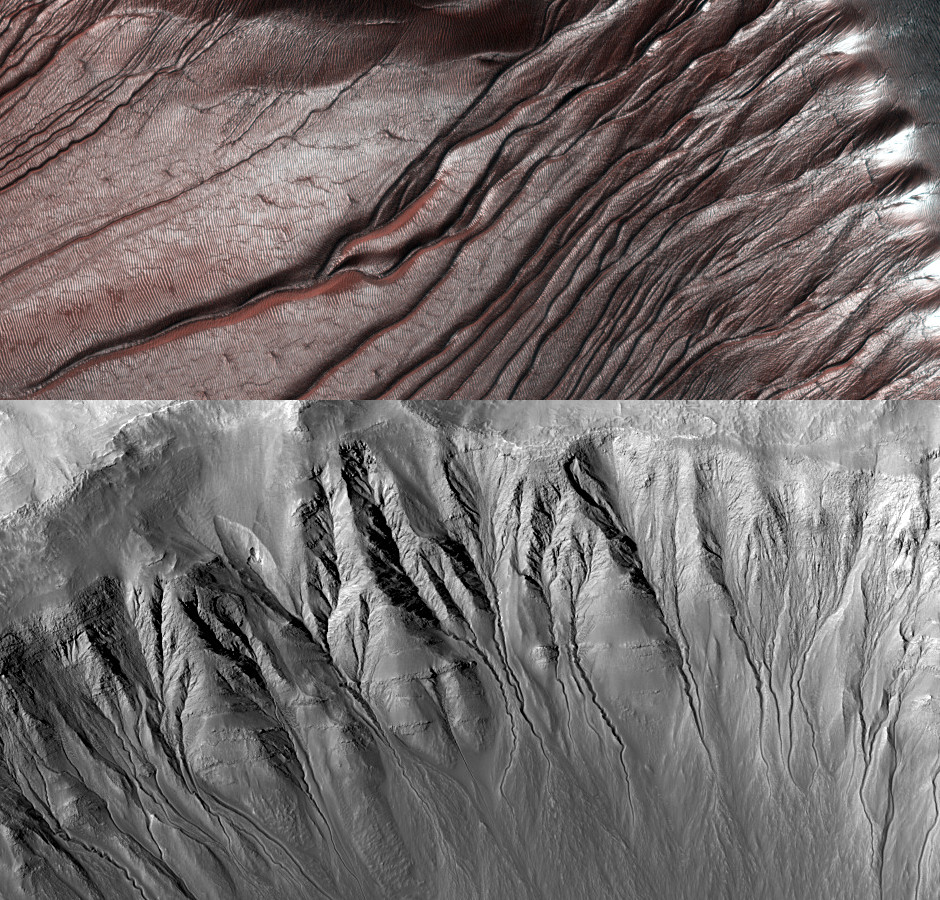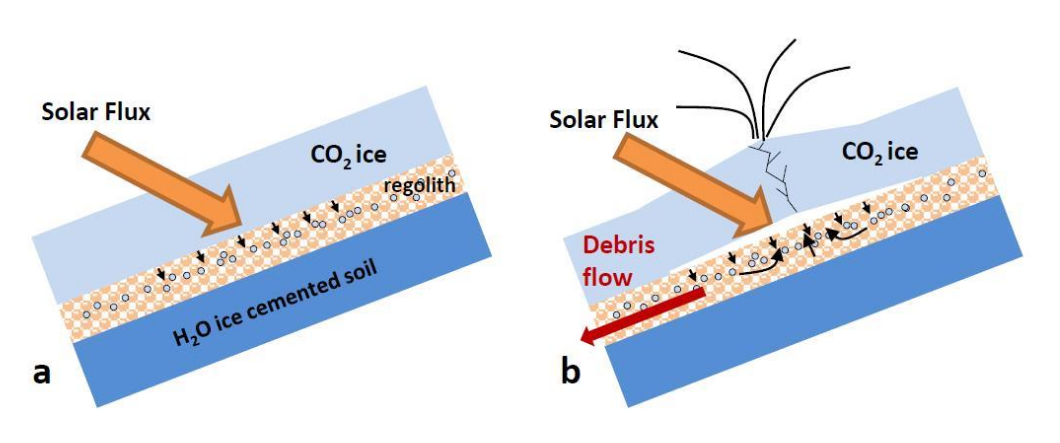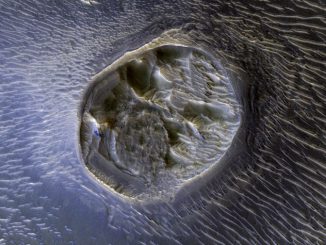
This scenario has recently been questioned by frequent monitoring of the Martian surface by the HiRISE camera aboard NASA Mars Reconnaissance Orbiter. This revealed that gully formation is ongoing on present-day Mars, at seasons when the surface environment of Mars is much too cold for liquid water to flow. However, the observed gully activity seems to occur when CO2 ice (condensed from the atmosphere during winter) is defrosting on the Martian surface. Can the two phenomena be related? If so, how could a thin seasonal dry ice layer deposited above the regolith trigger the formation of decametre-scale debris flows behaving as if they were lubricated by liquid?
To better understand the interaction between the CO2 frost and the surface materials, Cédric Pilorget, researcher at the Institut d’Astrophysique Spatiale (CNRS/Université Paris-Sud) and François Forget, CNRS scientist at the Laboratoire de météorologie dynamique (UPMC/ ENS Paris /CNRS/Ecole polytechnique) have developed a numerical model to simulate the environment on a slope. From the underlying regolith to the atmosphere above, the model takes into account the energy exchanges due to radiation, thermal conduction or induced by CO2 phase changes.
A key characteristic of the locations where CO2 ice condenses is that there is always a permafrost layer composed of water ice-cemented grains a few centimetres below the surface. Thus, when CO2 condenses on the surface in winter, the air present in the porous near-subsurface is trapped between the impermeable permafrost layer below and the CO2 ice layer above.
Although this process has no exact analogue on Earth, it can be related to terrestrial pyroclastic flows, which are gas–particle mixtures generated during volcanic eruptions. Such flows can travel several kilometres even on very moderate slopes. They can transport metre-sized rocks, and have been found to exhibit side “levees” which are very similar in size to the ones observed on the side of Mars’ gullies. As on Earth, where debris flows triggered by rain or melting snow are rare events, it is likely that an uncommon combination of conditions are required to destabilise the slopes.
The model created by the two French scientists can also explain why Mars’s gullies are located mostly in the 30°–60° latitude range — with a few spots at higher latitudes — and why most gullies are found on poleward facing slopes between 30° and 45° latitude. The CO2 induced pressurisation and fluidisation is predicted to occur precisely where gullies are observed.
All these findings suggest that the solar heating of the seasonal dry ice deposited in winter on Martian slopes is at the origin of a fraction — and possibly all — of the gullies observed on planet Mars. This process has no terrestrial analogues and do not require liquid water. According to this study, the gullies area may not provide potential habitable environments in Mars’ recent past.



